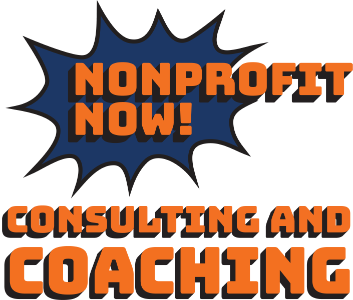|
One of the joys of coaching individuals in the nonprofit sector is seeing the incredible abundance of idealism, optimism, and support from friends and family. But as seemingly helpful as those components can seem, they can actually prove the most debilitating to the long term prospects of creating a successful charitable organization. Over my 20 plus years of working in the sector, here are what I’ve found to be The Top 5 Things Not To Do If You’re Starting A Charity:
Offer multiple programs: Nearly every time I meet with an individual who is considering starting a nonprofit, they have 2 or 3 or sometimes as many as 5 great ideas they want to put into action ASAP. Beyond that, they want to help multiple populations i.e. kids, women, the homeless, those without food and the list goes on. And they want to do it all in the first six months of getting into action. While that is the definition of wanting to be of service, it’s also almost impossible to execute on; particularly if you’re a solo-preneur (and most of the folks I meet are just that). Instead, ask yourself: What’s Breaking My Heart and Who Is It Breaking For? Serve those people in an extraordinary way. Serve them in a way that has a true impact on their lives. And it doesn’t have to be 1,000 or 100 people. Pick the program that speaks to your purpose and serve the number that allows you to do it well. Grow from there. Assume the money will take care of itself: If I walk into a room and say “Who Loves Fundraising?”, usually one hand goes up (my own) and I’m met with awkward stares. Yes, truth be told, fundraising isn’t a popular sport. But unless you come with your own endless resources, there’s a good chance you’ll eventually need to engage in some type of fundraising. The good news is that these days, there are platforms such as peer-to-peer fundraising that can allow you to fundraise digitally as opposed to the direct face-to-face method. There is foundation funding which I would start in Year 1 but you may not see for awhile. The point is, regardless of the resources you start with, Start Fundraising right when you Start Serving. Ask your friends and family to be board members: If you’re in the beginning stages of starting a charitable organization and realizing you may want or need a board, good thinking! But don’t make the mistake that’s often made. Whether you simply want individuals who can give you great ideas or may eventually need a true board of directors, take the time to find the right people. While your friends, family and spouse may be ready to sign up, in my experience, they’re rarely the right folks for the job. Seek out individuals, even those that may not know you (yet), that have what you’ll need to ensure success. What does that include? Time, Treasure and Talent is a popular term. For a bit more context, find those with the passion, subject matter expertise, financial capacity to support and willingness to connect you with other like-minded people. Assume that competition is a bad thing: When I’m working with a new nonprofit entrepreneur, one of the first things I’ll ask them is who else is offering a similar program or service? However, I’m not asking from the mindset of competition being a bad thing. Not at all. In fact, I’m asking from the perspective of abundance. In other words, if an organization (or two or three or more) is offering something similar, there’s a good chance that there’s a pretty significant problem that needs to be addressed. Further, it means there’s most likely a complexity to the issue that either can’t or thus far, isn’t being addressed by just one nonprofit. And that intersection is precisely the territory where a nonprofit is needed and maybe even welcomed. With a world that has an abundance of very significant challenges, there can’t be too many opportunities to do good. The job of the successful social entrepreneur is to figure out what gaps in service may exist and how they can be filled. Start a 501c3: Often by the time someone has sought out advice on starting a program with a social benefit, they’ve come to the conclusion they need to start a 501c3. While you eventually may go that route, it’s most effective to focus on creating the best possible program. You can still solicit donations by finding a fiscal sponsor that accepts them on your behalf for a small fee. This arrangement can be simple and created with a larger nonprofit. Beyond that, there are organizations who focus on helping new nonprofits grow often called incubator programs. I suggest this because somewhere along the way you may realize that your program can live quite comfortably as part of another nonprofit’s offerings. You also may find your offering works better as a B Corp (Social Benefit Corp - more on that another time). The bottom line is that the 501c-3 is the box or container for your good work. Focus on creating great work first and then spend time on finding the right container. While there are plenty of other things to do and not to do, the ones above tend to pop up most frequently. If I can ever help you with creating a better world, reach out at [email protected]
0 Comments
Leave a Reply. |
AuthorRobert Grabel is the President of Nonprofit Now! You can find his posts here and at www.robertgrabel.com Archives
August 2022
Categories |


 RSS Feed
RSS Feed
